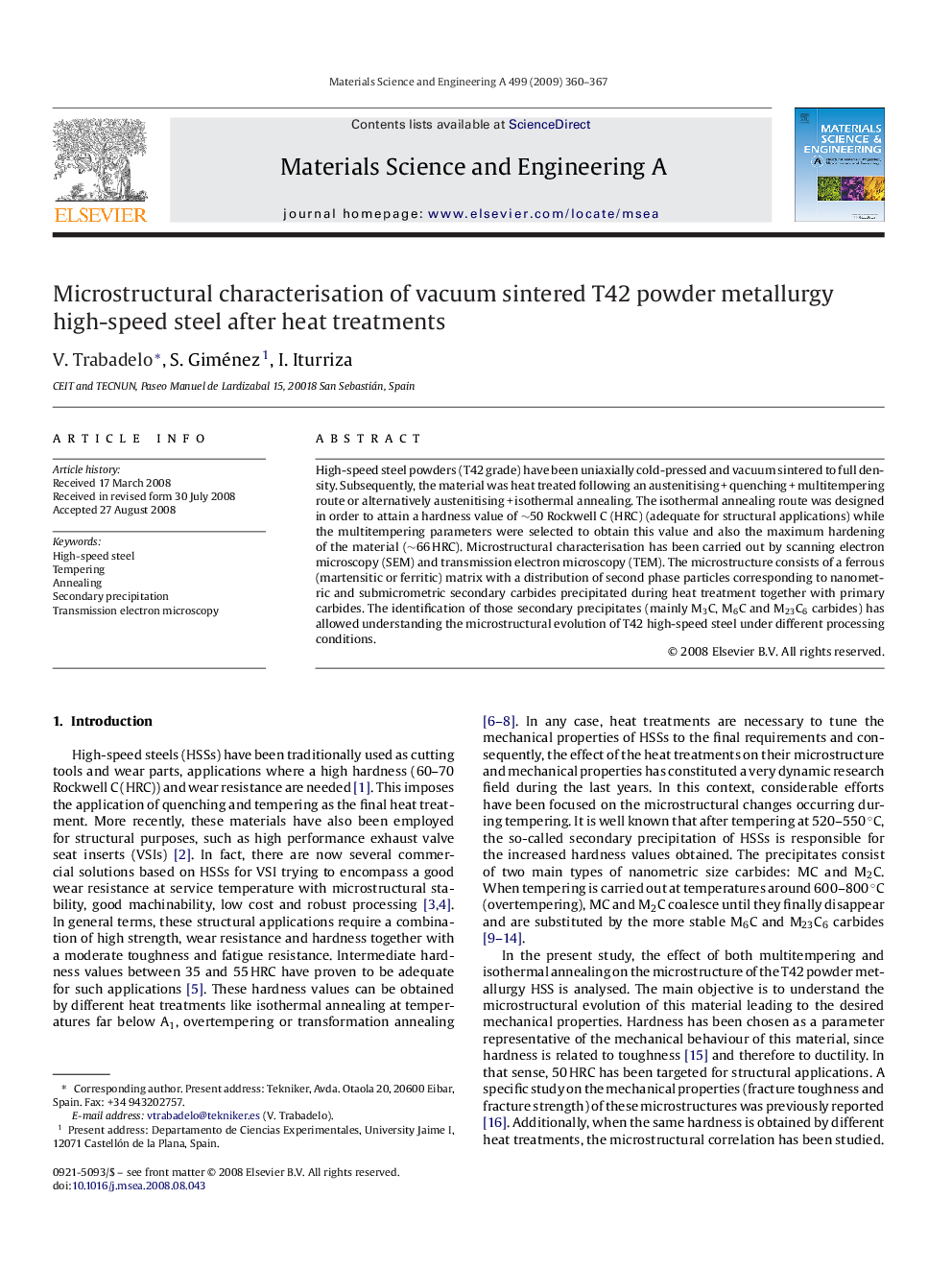| Article ID | Journal | Published Year | Pages | File Type |
|---|---|---|---|---|
| 1581706 | Materials Science and Engineering: A | 2009 | 8 Pages |
High-speed steel powders (T42 grade) have been uniaxially cold-pressed and vacuum sintered to full density. Subsequently, the material was heat treated following an austenitising + quenching + multitempering route or alternatively austenitising + isothermal annealing. The isothermal annealing route was designed in order to attain a hardness value of ∼50 Rockwell C (HRC) (adequate for structural applications) while the multitempering parameters were selected to obtain this value and also the maximum hardening of the material (∼66 HRC). Microstructural characterisation has been carried out by scanning electron microscopy (SEM) and transmission electron microscopy (TEM). The microstructure consists of a ferrous (martensitic or ferritic) matrix with a distribution of second phase particles corresponding to nanometric and submicrometric secondary carbides precipitated during heat treatment together with primary carbides. The identification of those secondary precipitates (mainly M3C, M6C and M23C6 carbides) has allowed understanding the microstructural evolution of T42 high-speed steel under different processing conditions.
